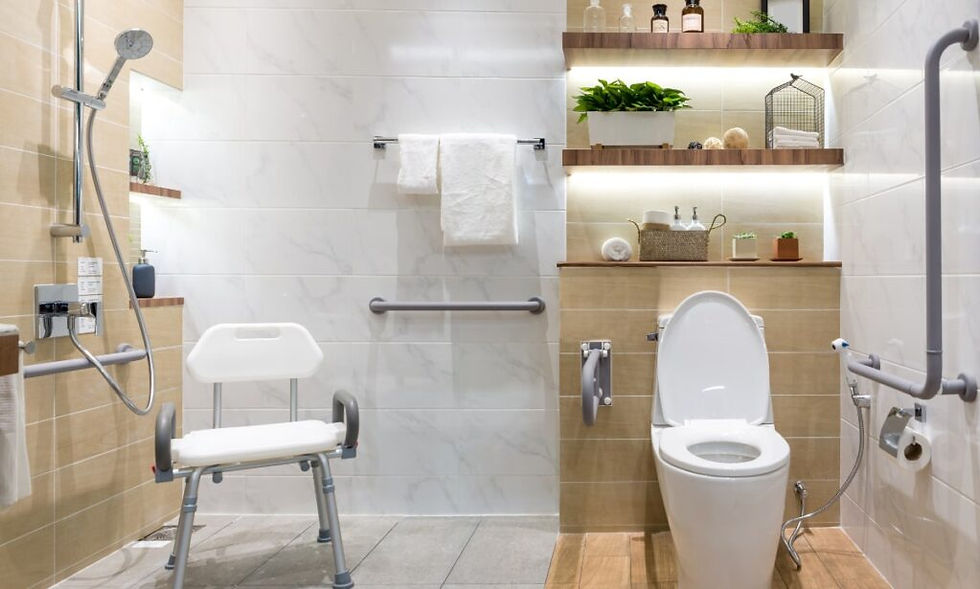The Basics of Aging in Place: A Comprehensive Guide
- stayhomebaseacc
- Nov 16, 2024
- 3 min read

Aging in place is a growing trend among seniors who want to maintain their independence and continue living in their own homes as they grow older. This concept encompasses various strategies, modifications, and support systems that allow older adults to remain safe, comfortable, and active in their familiar surroundings. Below, we’ll explore the fundamentals of aging in place, its benefits, and how to prepare a home and lifestyle for this approach to aging.
What Is Aging in Place?
Aging in place refers to the ability to live in one's own home safely, independently, and comfortably, regardless of age or physical ability. It’s an alternative to moving into a retirement community or assisted living facility. Aging in place typically requires adaptations to both the home environment and personal habits to ensure safety and comfort as mobility, vision, and other physical capabilities change.
Benefits of Aging in Place
Familiarity and Comfort:
Remaining in a familiar setting can reduce stress and improve mental well-being. Seniors feel more at ease surrounded by their memories and personal belongings.
Cost Efficiency:
Staying at home is often more affordable than assisted living or nursing home care, especially when modifications and in-home services are planned in advance.
Independence:
Maintaining control over daily routines, activities, and decisions contributes to a sense of autonomy and dignity.
Stronger Community Ties:
Staying in one’s neighborhood allows seniors to maintain relationships with neighbors, friends, and local support networks.
Key Components of Aging in Place
To age in place successfully, several factors need to be addressed:
Home Modifications:
Making a home safer and more accessible is essential. Common modifications include:
Installing grab bars in bathrooms.
Adding stair lifts or ramps for easier mobility.
Improving lighting to reduce fall risks.
Widening doorways to accommodate walkers or wheelchairs.
Health and Wellness Support:
Access to medical care and physical therapy can be facilitated through in-home healthcare services.
Monitoring systems, like wearable devices, help track vital signs and alert caregivers to emergencies.
Technology Integration:
Smart home devices like voice-controlled assistants, automated lighting, and home security systems can enhance safety and convenience.
Medical alert systems provide peace of mind for both seniors and their families.
Community and Social Engagement:
Staying socially connected through hobbies, community centers, or technology reduces isolation and keeps seniors active.
Financial Planning:
Aging in place often requires upfront investments in home modifications and ongoing costs for caregiving or maintenance. Proper financial planning is critical to making this option sustainable.
Steps to Prepare for Aging in Place
Evaluate the Home:
Conduct a safety assessment to identify potential hazards and areas for improvement. Consult professionals specializing in aging-in-place modifications for expert advice.
Plan for Future Needs:
Anticipate changes in mobility, vision, and health. Prepare the home and resources accordingly to prevent crises.
Build a Support Network:
Ensure that friends, family, or neighbors are available to assist when needed. Professional caregivers and local support services can also be valuable resources.
Adopt Technology Early:
Introduce seniors to helpful technologies gradually, ensuring they feel comfortable using devices that can improve their quality of life.
Stay Active and Informed:
Regular exercise, a balanced diet, and keeping up with health check-ups are critical to maintaining independence.
Who Can Help With Aging in Place?
Many professionals and organizations specialize in services to assist seniors with aging in place, including:
Aging-in-Place Contractors: Experts who design and implement home modifications to meet the needs of seniors.
Occupational Therapists: Provide recommendations for home modifications and assistive devices.
Senior Care Advisors: Offer guidance on planning and resources for aging in place.
Conclusion
Aging in place is a viable and rewarding option for many seniors, providing the opportunity to maintain independence and live comfortably in a familiar environment. However, success depends on thoughtful planning, home safety modifications, and a reliable support network. By addressing these areas, seniors and their families can enjoy peace of mind knowing that aging in place is both safe and sustainable.
For additional resources or assistance with aging-in-place services, visit StayHome, your trusted partner in creating safe and comfortable spaces for seniors.
%20Instagram%20Post%201080x1080%20px%20(1)_edited.jpg)
Comments